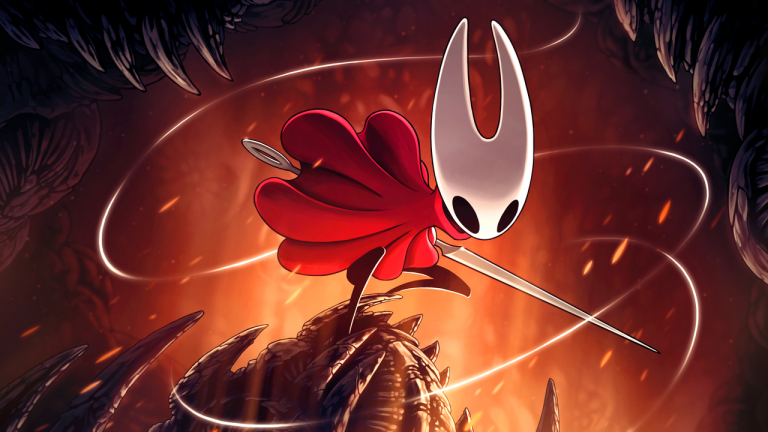It’s safe to say Contra passed on its crown as run-and-gun royalty a long time ago. The last truly great entry was 2011’s Hard Corps: Uprising—an unrecognizable-as-Contra game which doesn’t even bear the series name—and even before that point, Contra had muddled through multiple halfhearted reinventions in between quality games. I approached Operation Galuga with embers of optimism: It’s by WayForward, developers of 2007’s exceptional Contra 4, but its insistence on new playable characters with special abilities, perks bought with in-game currency, and an overhauled 3D look had me wary of another misguided attempt to complicate a formula defined by its simplicity.
What I got with Operation Galuga was just the opposite: a rock-solid celebration of classic Contra with new ideas that remix and recontextualize, but never crowd out, the shooter’s foundational meat and potatoes.
These days Contra has stiffer competition than ever, with modern masterworks like Cuphead, Blazing Chrome, and Huntdown building out the run and gun formula with more extravagant setpieces and more varied combat. But even amidst those games Galuga has some novel ideas. My favorite is the new overload mechanic: You pick up special weapons as you go like in most other Contra games, and you can only carry and swap between two at a time. But you can now overload your active gun to destroy it in exchange for explosive benefits, like an actual explosion, a bullet-soaking shield, or the ability to stop time for a few seconds.
On top of this, you can pick up two guns of the same type to wield an ultra-powerful version of that weapon until you get hit. These additions threw an interesting wrench into my typical Contra game-plan—get the spread shot and hold onto it for dear life—and had me thinking about more than dodging bullets in the heat of the moment.
The perk store offers similarly powerful boons: character-specific special moves, extra lives, free weapon upgrades, extra hit points, and so on that you can buy with credits earned by playing. If you enjoy run-and-guns for the tough-as-nails difficulty, this might all sound like the sort of stuff you’d find on a Game Genie, but the customization goes both ways. From the very start you can up the difficulty, make every enemy attack a one-hit-kill, and even deactivate 360 degree aiming (making Galuga stress me out as much as the famously brutal Contra: Hard Corps). It’s all optional and easy enough to ignore entirely, but if you want to wring all the value you can out of the game, nabbing and toying with every one of these cheat codes will take more than a few pizza-fueled Friday nights.
(Image credit: Konami)
(Image credit: Konami)
(Image credit: Konami)
(Image credit: Konami)
(Image credit: Konami)
If you forgo any optional modifiers, Operation Galuga is “just” a souped-up, modernized retelling of the NES original—with so many new levels, setpieces and redesigned encounters that it’s unmistakably its own thing. Jumping feels snappy and precise, iconic arms like the homing shot and laser gun return alongside a few new ones, and double-jumps and airdashes make you a nimbler glass cannon than ever.
My only real gripe is with the story and dialog, which occasionally pipe up while I’m busy trying to shoot stuff. It’s not that the writing or acting is bad, it’s just that it’s devoid of much substance; shattering a run-and-gunner’s flow state so some evil robo-terrorist can remind me he’s an evil robo-terrorist is a sin most games are mindful enough to avoid. Cutscenes are skippable, but the fact that they trigger mid-level still brings the action to a screeching halt. Previous Contra stories had the good sense to either be hilariously zany or completely absent, so unless I’ve missed another secret ending where my G.I. marries a chimpanzee, I’m holding this one against you, Operation Galuga.
(Image credit: Konami)
(Image credit: Konami)
(Image credit: Konami)
(Image credit: Konami)
The game’s eight stages make for a brisk playthrough assuming you don’t die as much as I did, but replayability is through the roof. Challenge mode, uh, challenges you to master specific guns, speedrun the game, get through levels without firing a shot, and so on. After 2 hours in Arcade mode with the difficulty options fully cranked, I’d nearly crawled nearly the halfway mark when I dropped my beloved spread shot and died to a one-hit-kill bullet. That’s the old Contra torture that hurts so good.
And with Project Galuga’s high degree of customization, you can really dial in how you choose to self-flagellate. I’m not sure it reaches the eye-straining highs of the very best Contras, but it’s a thrilling return to form for a long-dormant titan, an accessible entry point to the genre it helped define, and a rich playground for veterans to test their mettle.












